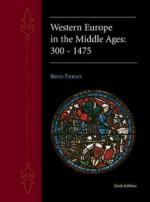|
This section contains 2,365 words (approx. 8 pages at 300 words per page) |

|
Urban Crafts. One of the qualities that distinguished a city from a village or even a market village was the diversity of crafts that could be found in a city. Specialties and subspecialties in almost any area of manufacture could be found in a regional center. Moreover, as the European economy expanded in the twelfth and thirteenth centuries, the demand for diverse artisanal skills also grew. One way in which scholars can track the variety of crafts is through last names, which were just coming into use at that time. Many craftsmen took names that identified their family with their trade; for example, families working in construction included the Smith, Schmidt, Faber, Tinker, Plumb, Houseman, Mason, Maurer, Thatcher, Glazer, Turner, Carpenter, and Dauber. Craftsmen often dominated urban governments, and certain crafts and their guilds were more prestigious and...
|
This section contains 2,365 words (approx. 8 pages at 300 words per page) |

|




